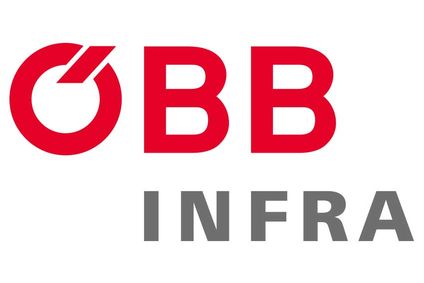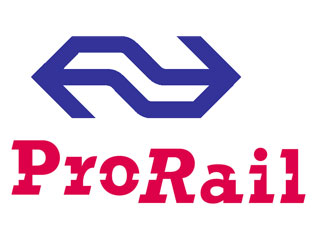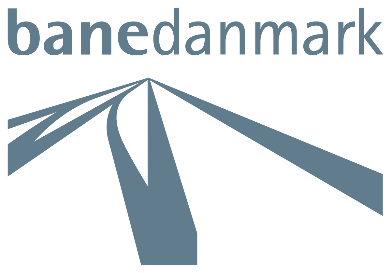Railway Infrastructure

Optima Nexus Consulting AG has supported SBB AG for many years with contributions in infrastructure development and management, in addition to strategic service concepts. Which includes:
- Implementation of the network condition report:
Support in the preparation of annual network condition reports. The network condition report is based on a bottom-up aggregation logic of asset information from individual assets to entire infrastructure portfolio analysis; support in the preparation and management of the report process including the implementation of the methodology has been provided. - Development of planning standards:
The “SBB planning standards” define the functional planning specifications related to rolling stock, railway lines and node/ hub requirements. - Development of an asset management strategy for the railway network:
Asset management strategies for the railway network were developed top-down, including the derivation of short, medium and long-term funding requirements. - Development of a RAM (S) concept:
The RAM model modulises higher-level availability targets down to the asset level – a building block defines measures to achieve these targets - Development of an algorithm for automated clustering of maintenance work:
In swissTAMP’s “Maintenance Planning” module, various maintenance activites are automatically combined into economically optimal construction size/ length/ quantities. - Audit of railway access:
The funds required until 2040 to eliminate capacity bottlenecks were determined algorithmically at 250 stations on the basis of simulation models. - Development of a risk-based prioritisation tool for railway stations:
The risk-based prioritisation tool for railway stations created a ranking of railway stations at platform level with regard to their risk potential. - Guidance of the performance agreement LV 2017-2020:
The negotiation process of the performance agreement 2017-2020 was accompanied analytically for approx. 18 months. - Definition of clusters with reduced maintenance activities:
The customer-side impact of a planned reduction of funds in infrastructure maintenance were analysed and demonstrated. - Analysis of revised management of secondary lines:
Limited maintenance on secondary lines can significantly reduce the need for funds. - Forecasting of cost of railway renewal per track metre:
The main factors influencing the development of costs in railway renewal were identified and finacially evaluated. - Benchmarking of service quantities and unit prices:
The most important services/unit costs were compared across five infrastructure managers, taking into account the asset inventory/production volume, quality, etc. - RailFit 20/30 – Long-term service concept:
Conception and modelling of a business case for the group-wide strategic service development. - Development of a business case for the industry program smartrail 4.0:
Modelling of the business case for the industry program smartrail 4.0 and support of the content for program management. - Conception of a forecasting model for maintenance resource requirements:
The target distribution of condition classes allows a line-specific prognosis of the expected Opex resources and availability.

At ÖBB Infrastruktur AG, the network condition report was introduced and further developed as a reporting tool by Optima Nexus Consulting AG. In addition, control concepts for strategic infrastructure asset management and business cases for the further development of safety-related technology were developed. The contributions of Optima Nexus Consulting AG comprise:
- Support in the further development of asset management:
Development of methods for the evaluation and assessment of asset condition. - Development of a software to automate the generation of network conditon reporting:
Introduction and further development of IT tools for the evaluation and reporting of asset condition. - Comparison of methodological condition assessments:
International comparison of the similarities and differences in the NCR methodology of SBB and ÖBB, including their justification. - Definition of a target asset condition:
The target asset condition defines the long-term target condition in the context of the defined asset management strategies. - Definition of target costs:
Cost benchmarks and development of cost targets for infrastructure maintenance and renewal services at the route/ line level. - Forecast algorithm for maintenance service quantities:
Development of method to determine long-term maintenance and renewal quantities with the according budget. - Development of an interlocking replacement plan:
Development of business cases for strategic technology decisions. - Economic efficiency calculation for automated railway production:
For a strategic migration program for railway production, the total potential in a steady state was determined.

Services were provided for DB Netz AG as part of the financing of infrastructure maintenance and renewal. These include:
- Auditing of the forecast model:
Review of life cycle management tools. - Support LuFV III negotiations:
Preparation and monitoring of negotiations on long-term railway infrastructure financing. - Analysis of the backlog demand:
Analysis work on the relationship between infrastructure condition, funding requirements and quality. - Benchmarking project:
Benchmarking studies on cost levels for infrastructure maintenance and renewal work for European railway infrastructure managers. - Development of a concept for the evaluation of customer-friendly construction.

At Bane NOR SF, Optima Nexus Consulting AG introduced the software-supported reporting and asset management framework for the railway infrastructure. The services include the technical introduction as well as the entire methodical and conceptual support and the development of necessary structures and understanding. The following modules of the Mobility Infrastructure Asset Management Framework (MIAM 4.0) are implemented:
- Network Condition Report process support:
support for the management of the periodic reporting process. - Evaluation of the current network condition
on the basis of asset type-specific KPIs. - LCC-optimal maintenance plans:
Calculation and definition of LCC-optimal maintenance plans. - Development and definition of network condition target values:
Definition of specifications for the network as a target or comparison value. - Forecast of service quantities:
Forecast of service quantities and corresponding budget forecasts. - Extract/Transform/Load modules for automated data importing from productive systems:
Development of Extract/Transform/Load modules for systems into the MIAM framework. Data is accessed, restructured, enriched, as well as quality checked and automatically evaluated. - Unit price capturing tool:
Web based tool to assist project cost analysis, providing cost breakdown and assignment to different components and activities. Based on the inputs, a database is built that is used for the elaboration of unit cost for asset renewal and maintenance. - Data based and automated creation of a national renewal plan:
Based on asset condition and prioritisation rulesets, renewal funding for a multi-year period was algorithmically assigned for the entire network. This provided a streamlined process, data-backed results and a bias-free assignment of funding as well as the possibility to test multiple scenarios.

At ProRail B.V., concepts for reporting tools on the condition of infrastructure were developed and tested on selected case studies.

In order to gain a better understanding of best practices and cost levels, Banedanmark commissioned a benchmarking exercise on costs and methods of maintenance and renewal for a number of European railway infrastructure managers.

BLS Netz AG was supported in the development of tools for the life cycle management of railway infrastructure systems. Further contributions were made to the programme management of a strategic development programme and to the elaboration of strategy development of BLS AG strategy process.
- Cost-Benefit calculation tool:
Economic analysis and decision support tool for projects from the entire organisation. Basic parametrisation of standard values, a high degree of automation as well as comfort-features such as pre-generated inputs for standard projects and operations ensure that economic analyses are performed in a standardised, compliant, efficient and user-friendly way. - LCC-Tool:
Development of a life cycle cost tool for railway infrastructure assets in order to determine LCC optimal lifetimes as well as decide between different scenarios. - Strategy development support:
Strategy development for service and business models by identifying key timelines and windows of opportunity, development of market scenarios, review of strength and weakness in each scenarios and based on that proposal of promising future business models. - Positioning regarding regulations:
Regulation review with a focus on strategic impact in order to evaluate regulations with respect to hindering/enabling/protecting effects, elaboration of desirable developments and consolidation into a corporate position. - Support of a program introducing new business models with programme management support as well as review and quality control of contributions from all programme parts, review and evaluation of key programme steps.

